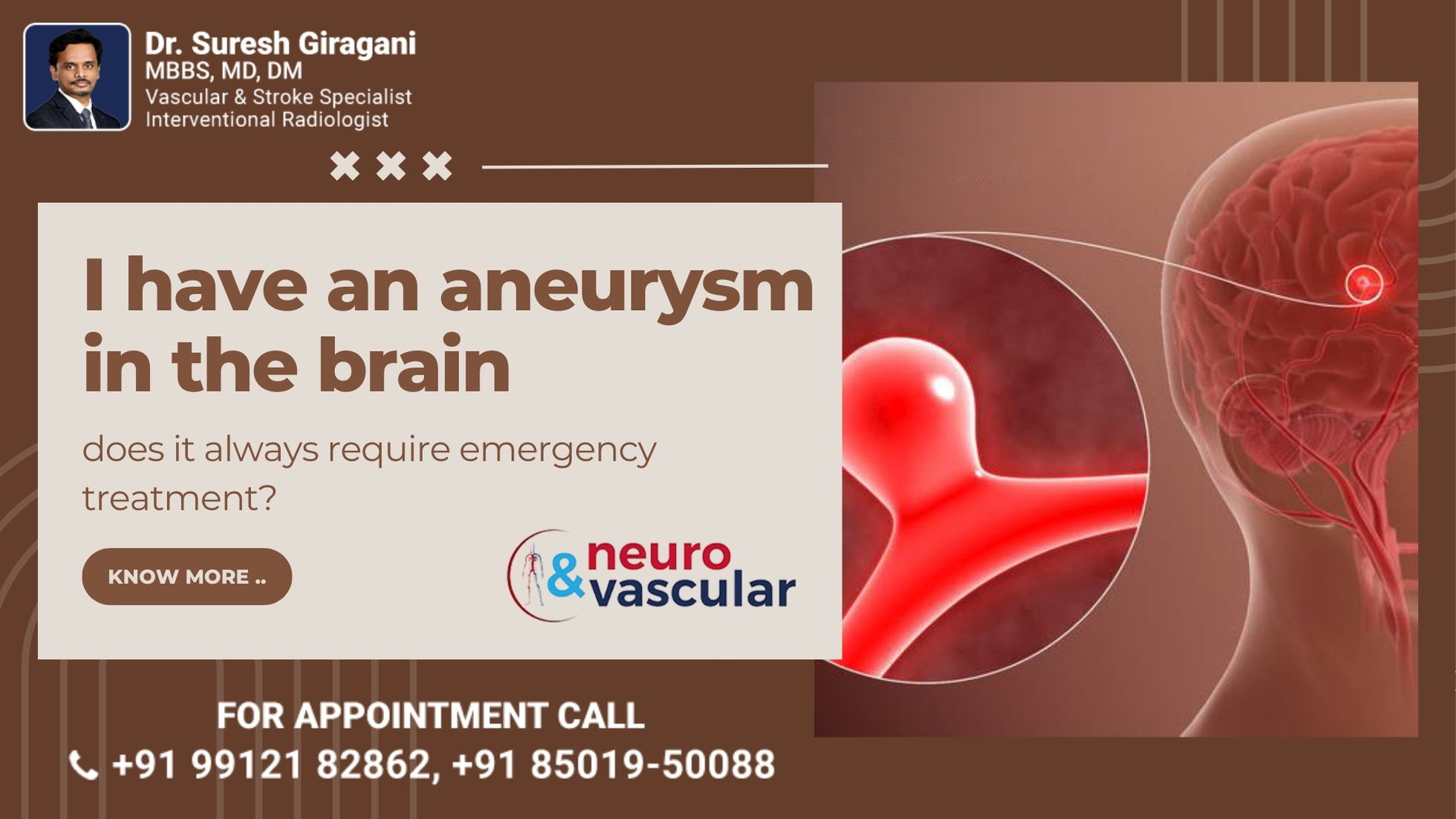
I have an aneurysm in the brain, Does it always require Emergency treatment?

A brain aneurysm is a potentially serious condition that arises when a blood vessel in the brain bulges or balloons due to a weak spot in its wall. While the mere presence of an aneurysm can be alarming, it’s important to understand that not all brain aneurysms require immediate emergency treatment. Let’s delve into what brain aneurysms are, when they become emergencies, and how they are typically managed.
What is a Brain Aneurysm?
A brain aneurysm, also known as an intracranial or cerebral aneurysm, occurs when a weakened section of a blood vessel in the brain fills with blood and bulges out. They can vary in size and shape, with some being as small as a pea and others being much larger. Most aneurysms are found in the arteries at the base of the brain.
Types of Brain Aneurysms
- Saccular Aneurysm: Also known as a berry aneurysm, this is the most common type, characterized by a rounded sac filled with blood.
- Fusiform Aneurysm: This type involves a widening along all sides of the blood vessel.
- Dissecting Aneurysm: This occurs when a tear in the artery wall allows blood to leak between the layers of the wall.
Do All Brain Aneurysms Require Emergency Treatment?
Not necessarily. The need for emergency treatment depends on several factors, including the size, location, and risk of rupture of the aneurysm.
- Unruptured Aneurysms: Many aneurysms are found incidentally and do not cause symptoms. These unruptured aneurysms may not require emergency treatment but should be monitored regularly by a healthcare professional. The decision to treat an unruptured aneurysm depends on factors such as its size, growth rate, location, and the patient’s overall health and medical history.
- Ruptured Aneurysms: When an aneurysm ruptures, it leads to bleeding in the brain (hemorrhagic stroke), which is a medical emergency. Symptoms of a ruptured aneurysm include a sudden, severe headache, nausea, vomiting, stiff neck, blurred or double vision, sensitivity to light, and loss of consciousness. Immediate medical attention is required to prevent severe complications or death.
When to Seek Emergency Treatment
- Sudden Severe Headache: Often described as the “worst headache of life.”
- Nausea and Vomiting: Accompanied by a severe headache.
- Vision Problems: Blurred or double vision.
- Loss of Consciousness: Fainting or passing out.
- Seizures: Experiencing convulsions or fits.
- Stiff Neck: Along with a headache and other symptoms.
Management and Treatment Options
Interventional Treatments for Brain Aneurysms
- Surgical Clipping: A metal clip is placed at the base of the aneurysm through a craniotomy, stopping blood flow into the aneurysm. This invasive procedure offers a long-term solution but requires a longer recovery.
- 2. Endovascular Coiling: A catheter delivers platinum coils into the aneurysm, promoting clotting and sealing it off. This minimally invasive Endovascular Coiling procedure has a shorter recovery time but may require follow-up treatments.
- 3. Flow Diversion: A stent-like device redirects blood flow away from the aneurysm, promoting natural healing. Suitable for large or complex aneurysms, this minimally invasive option requires monitoring.
Conclusion:
Not all brain aneurysms require emergency treatment, but it’s crucial to seek medical advice if you suspect you have one or experience symptoms suggestive of a rupture. Regular monitoring and early intervention can help manage the condition and reduce the risk of complications. The advanced interventional treatments provide effective options for managing brain aneurysms, with choices tailored to the aneurysm’s characteristics and patient health. Consult with our best interventional radiologist in Hyderabad to determine the best treatment plan
About the Author:

Name: DR . SURESH GIRAGANI
INTERVENTIONAL RADIOLOGIST
DR. SURESH GIRAGANI CONSULTANT INTERVENTIONAL RADIOLOGIST at Apollo hospitals Jubilee Hills has more than sixteen years of clinical experience in vascular interventions with a special interest in neurovascular and peripheral vascular disease interventional procedures.